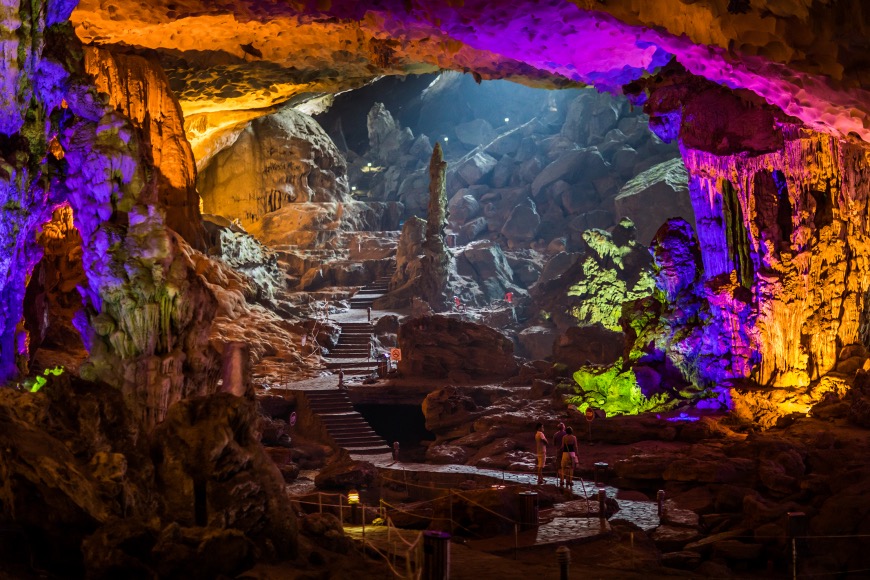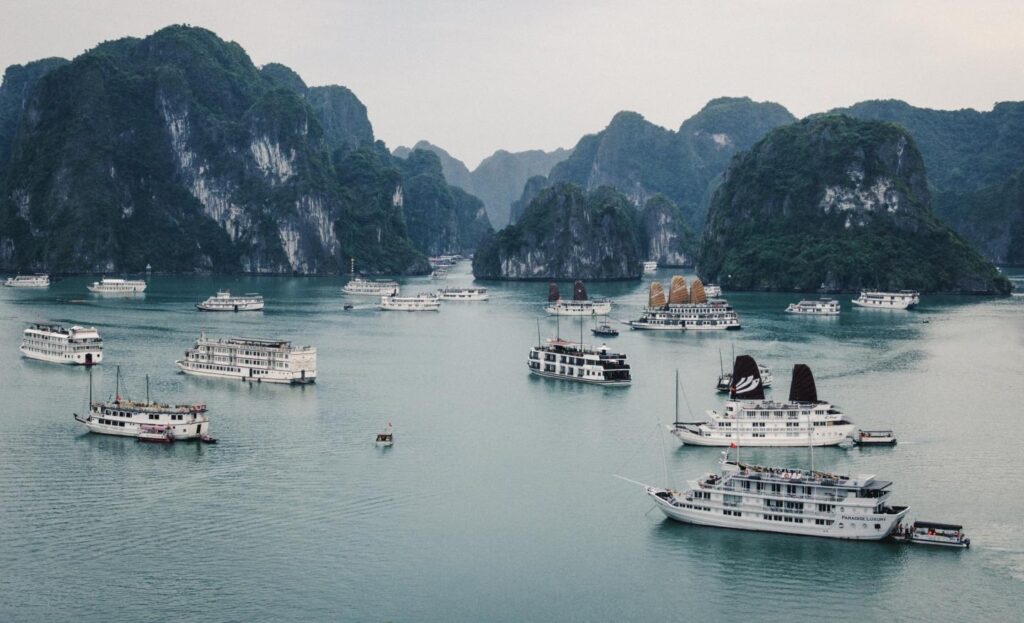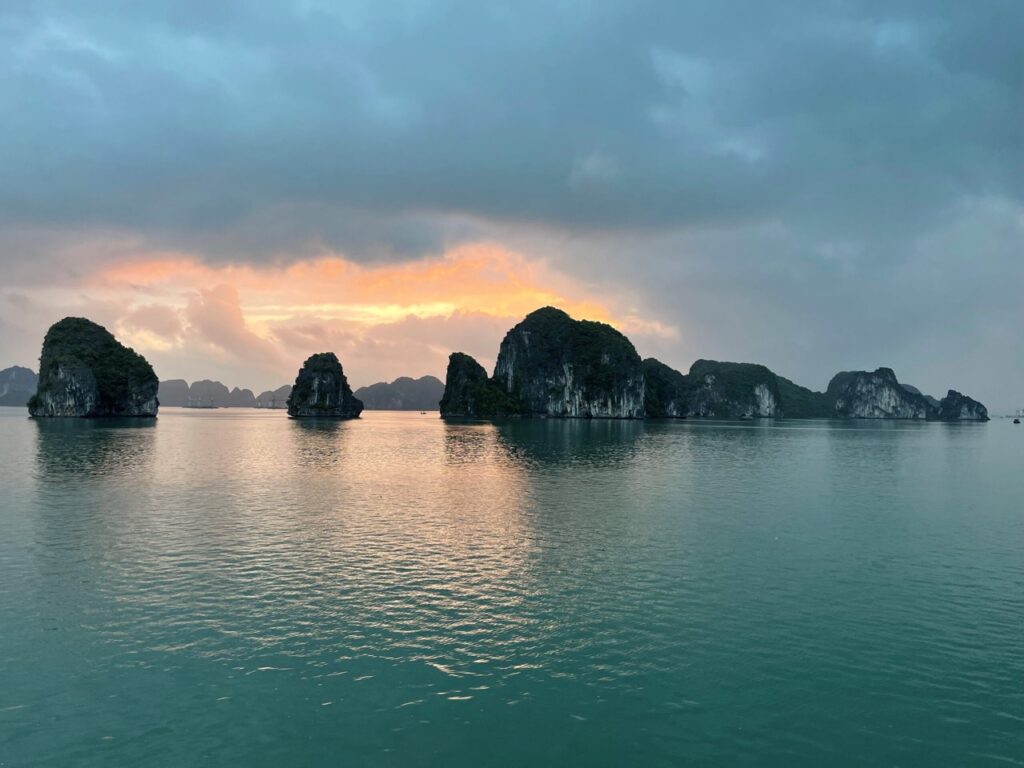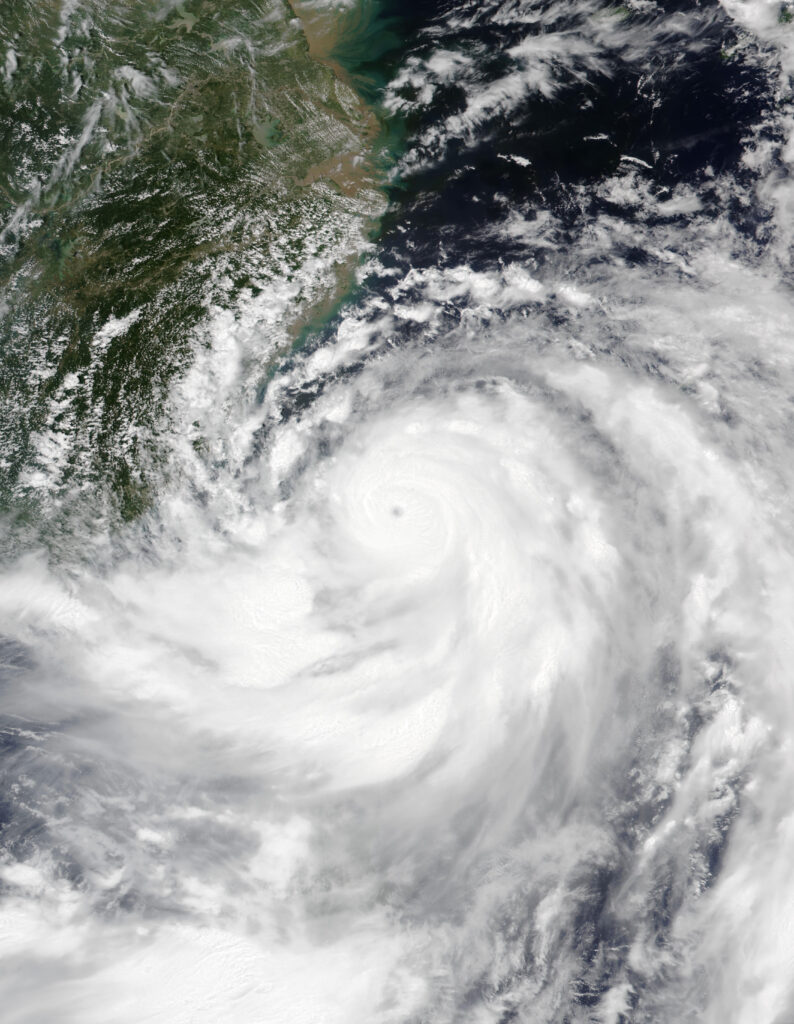Vietnam Charting a Sustainable Future in Ha Long Bay
| By Han Tran |
Searching for Balance to Promote and Protect Ha Long Bay
Ha Long Bay, a UNESCO World Heritage Site located in Vietnam, is a natural wonder boasting breathtaking landscapes and rich cultural significance. This unique convergence of nature and culture attracts tourists from around the world, making it a leading contributor to Vietnam’s economy. However, the rapid growth in tourism has raised concerns about the impact on the local environment, highlighting the need for sustainable practices to preserve this exceptional site.
Ha Long Bay: A Treasure Trove of History and Natural Beauty
Ha Long Bay, or “Descending Dragon Bay”, is one of the Wonders of the World, distinguished by its breathtakingly scenic mountains, caves, and geology standing atop emerald waters. Located in Quang Ninh province in the Northeast of Vietnam, the Bay has significant cultural and heritage value. It’s famous for its natural cave system, which formed from 11,000 to 2 million years ago. In addition to the breathtaking landscapes, Ha Long Bay is also an idyllic tourist destination with pleasant tropical weather. Visitors can enjoy many aquatic activities and sports, including sightseeing on kayak cruises, swimming to enjoy the fresh emerald waters, and hiking in the mountains to take in the stunning panoramic view of the Bay.
The Bay’s spectacular natural topography gives tourists a lifelong memorable experience. One of the highlight activities when visiting Ha Long Bay is exploring the caves and caverns. When passing through the small entrances, visitors are often surprised by how spacious and deep the caves are. The melodious wind blowing through the rocks, the skylight reflection and shading, and scenes engraved on the walls give visitors a unique and unforgettable sight, creating a mysterious and unique story for the caves.

The numerous caves under the Bay each have a unique name that symbolizes a historical event. One of the caves named “Thien Cung Cave” or “Heaven Palace” represents the story of a Dragon prince who successfully defeated invaders. Despite receiving many honors and awards, he refuses them and prioritizes his personal life in the cave. He later married his love, May, and the cave is where he chose to hold the wedding ceremony. This event is shown engraved on the cave walls, with scenes of flying dragons, dancing animals, and singing fairies to celebrate with them.
Tourism Boom Brings Economic Benefits …
Ha Long Bay attracts both national and international tourists, significantly contributing to Vietnam’s economy – accounting for around 7% of the country’s revenue. As one of Vietnam’s most popular attractions, the Bay has seen drastic growth in visitor numbers, jumping from 1.6 million in 2010 to 6.8 million in 2023. The Bay’s tourism recovered quickly from the COVID pandemic within 2 years. The total number of visitors coming to Ha Long Bay in 2022 surpassed projections by over 120%.
… But Rising Tourism is Creating Environmental Consequences
Being a tourist attraction promotes cultural appreciation and economic benefits, as it enables tourists to learn more about the heritage and history of Vietnam. However, this also necessitates effective and active environmental management and maintenance of the site. The tourist boom has raised demand for outdoor sightseeing activities and infrastructure, including cruises, kayaking, hotels, and resorts nearby. As a result, littering, toxic heavy metals, and plastic trash from nearby power plants, resorts, and tourists have significantly damaged the water quality, creating a plastic pollution crisis at the Bay. This has gradually harmed the emerald waters, marine life, and the ecosystem in and around the region.

This environmental danger and damage must be addressed as soon as possible as it poses significant threats to the area and the surrounding ecosystem. Comprehensive actions are required to alleviate tourism’s negative effects while preserving Ha Long Bay’s natural beauty and ecology. Environmental protection initiatives not only demonstrate appreciation and preservation of the landscape and tourist attraction, but also enhance the historical value of Ha Long Bay as a cherished symbol of Vietnam’s natural heritage.
Cherishing Ha Long Bay’s Legacy: A Call for Responsible Tourism
Ha Long Bay embodies the history and natural heritage of Vietnam, showcasing the country’s beautiful blend of tropical weather, emerald waters, captivating legends, and stunning geological formations. Preserving the region’s natural heritage is crucial for safeguarding this national treasure while also allowing visitors to have full experiences at the Bay. Regional resorts need to ensure they have properly managed their waste matter. Cruise ships, kayaks, and other activities on the water need to restrict their toxic exhausts and harmful components to protect marine life and water quality. As overtourism and sustainability problems increase around the world, national and international visitors must raise their awareness of the delicate ecosystem. Everyone needs to protect and preserve the environment together so that future generations can experience and appreciate Ha Long Bay.

Featured Image Photo Credit: Vietnam Tourism Board



